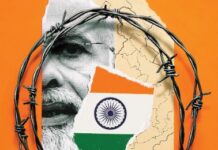For months now, the State Bank of Pakistan (SBP) has maintained the policy rate at a staggering 22%, a move aimed at appeasing the International Monetary Fund (IMF) while adopting conservative policies to steer Pakistan’s economic trajectory back on track. This resolute stance comes amid ongoing negotiations with the IMF, where the fund demands stringent measures to rectify Pakistan’s economic woes.
The decision to keep the policy rate at an unprecedented high reflects the government’s commitment to adhering to the IMF’s prescriptions for fiscal discipline. With the IMF’s conditionalities stressing the importance of stabilizing Pakistan’s economy through austerity measures and structural reforms, the SBP’s move is perceived as a step towards fulfilling these obligations. By demonstrating a willingness to implement tough monetary policies, Pakistan aims to restore confidence among international investors and secure much-needed financial assistance from multilateral institutions.
Nevertheless, while these measures may be deemed necessary for stabilizing Pakistan’s macroeconomic indicators, they come at a cost to the domestic economy. The exorbitant policy rate severely constrains the ability of businesses to access credit, stifling investment and hampering economic activity. Small and medium enterprises (SMEs), which serve as the backbone of Pakistan’s economy, bear the brunt of these stringent monetary policies, as they struggle to sustain operations amidst soaring borrowing costs.
One must remember that there is very little choice but to do this and comply with the fund’s suggestions. But businesses are paying for the short sighted decisions of governments past.
Moreover, the persistently high policy rate exacerbates the challenges faced by Pakistan in achieving robust economic growth. With borrowing becoming prohibitively expensive, businesses are reluctant to expand operations or undertake new ventures, leading to stagnation in productivity and employment generation. This prolonged period of sluggish growth not only undermines the country’s efforts to alleviate poverty and unemployment but also dampens prospects for long-term economic development.
Furthermore, the reliance on conservative monetary policies to address structural imbalances overlooks the need for comprehensive reforms aimed at enhancing productivity, promoting innovation, and fostering inclusive growth. While austerity measures may offer short-term stability, they risk exacerbating income inequality and widening the gap between the rich and the poor. To ensure sustainable economic recovery, Pakistan must prioritize investments in human capital development, infrastructure, and technology to unleash the full potential of its economy.
While the SBP’s decision to maintain a high policy rate underscores Pakistan’s commitment to fiscal discipline and adherence to IMF prescriptions, it poses significant challenges to domestic businesses and hampers prospects for economic growth. As negotiations with the IMF continue, policymakers must strike a balance between meeting international obligations and safeguarding the interests of the domestic economy. Only through a holistic approach that addresses structural weaknesses and fosters inclusive growth can Pakistan chart a path towards sustainable prosperity.






















